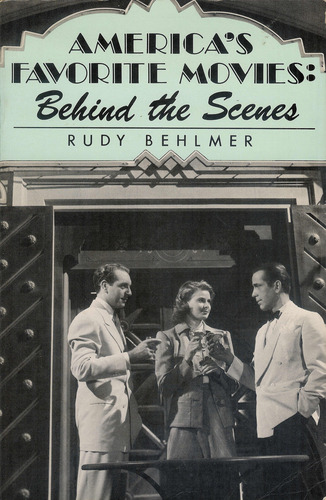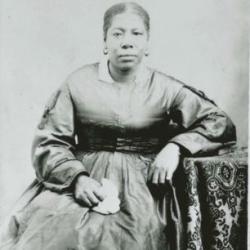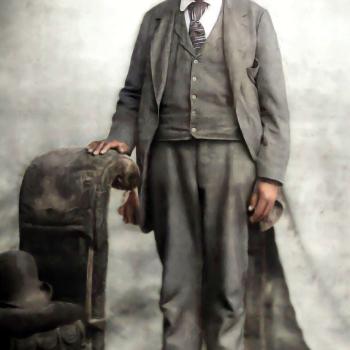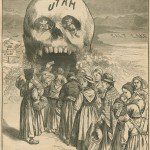
Here is the first of my used bookstore finds: America’s Favorite Movies: Behind the Scenes, by film historian Rudy Behlmer. Published in 1982, this now out-of-print work is a treasure trove of primary source material for some of the most enduring classics of Hollywood’s golden age. It covers some that I either don’t know or don’t care for, but it also includes many personal favorites such as The Adventures of Robin Hood, Stagecoach, Casablanca, The African Queen, Singin’ in the Rain, and High Noon. These are movies whose staying power derives largely from the fact that you don’t have to be a stuffy film critic to appreciate them. No directorial narcissism or abstract mucking about, just good stories well told, made by people committed to getting it right, sometimes at enormous personal cost. The book also sets their production in rich historical context, explaining how they were affected by the Depression, WWII and the Cold War. Herewith, a few quotes and notes that I found to be of particular interest (with trailer links in the titles).
Snow White and the Seven Dwarves (1937): Hand-drawn animation has always fascinated me, and while this isn’t my favorite Disney movie, I can’t deny its watershed significance for Disney and the history of animated film in general. Reading the story behind it gave me new respect for the creative effort that went into its production. For one thing, there was the bevy of fresh talent that had to be hired just for the realistic depiction of human characters. This was a godsend to hundreds of young men desperately looking for work during the Depression with art degrees they thought they would never be able to use. Overnight, the studio became an art school, with experts brought in to lecture on every aspect of film-making and every resource provided for the young talents to expand their knowledge. Animator Marc Davis recalls:
Whatever we were doing hadn’t been done before . . . . There was excitement and there was competition; everyone was young and everyone was doing something.
We saw every ballet, we saw every film. If a film was good we would go and see it five times. At one time Walt rented a studio up in North Hollywood and every Wednesday night we would see a selection of films—anything from Chaplin to unusual subjects. Anything that might produce growth, that might be stimulating—the cutting of scenes, the staging, how a group of scenes was put together. Everybody was studying constantly. . . . We weren’t making much because the Studio didn’t have much, but it was a perfect time of many things coming together in one orbit. Walt was that lodestone. (p. 47)
Excerpts from a story conference on the “Whistle While You Work” sequence show the thought and care put into making every scene as imaginatively detailed as possible. But Walt is the guiding force, blending imagination with a fine sense of pacing and focus. Take this exchange between him and another animator:
Ham: Are there any gags on the animals themselves—like bird trying to clean gourd; gets head stuck . . . .
Walt: Yes, that is what we ought to do, but not bring in gags that have nothing to do with cleaning . . . . Have rabbits dusting vigorously; dust gets the best of them—they sneeze and keep on dusting . . . . At that point she would catch the squirrels sweeping stuff under the floor. They sweep dust to hole in baseboard to get rid of it; stuff comes flying out and rat comes out. . . . (pp. 52-53)
I loved reading about how the voices were cast too. The guy who played Sneezy had literally perfected a specialty sneeze and immediately called Disney when he saw in the paper that they were casting a dwarf named Sneezy. It took one audition for him to get the part right away.
The Adventures of Robin Hood (1938): This sumptuous medieval period piece captures Warner Brothers in its prime, with the dynamite team of producer Hal Wallis, action director Michael Curtiz, Errol Flynn as the dashing Robin Hood, Olivia de Havilland as his graceful Maid Marion, and veteran baddies Claude Rains and Basil Rathbone. It also features composer Erich Wolfgang Korngold at his romantic best. Star Wars composer John Williams has cited Korngold as a major influence, and his Oscar-winning score for Robin Hood is one of his best works. However, this book reveals that the Austrian-born composer initially turned down the offer flat, insisting:
I am a musician of the heart, of passions and psychology; I am not a musical illustrator for a 90% action picture. Being a conscientious person, I cannot take the responsibility for a job which… would leave me completely artistically dissatisfied… Please do not try to make me change my mind; my resolve is unshakeable. (p. 84)
But Korngold was Jewish, and when he heard that Hitler was in Berchtesgaden, he immediately accepted the offer and took a boat to Hollywood. It was February 12, 1938, and not a moment too soon before the Nazis would invade his property in Vienna. I was also fascinated to read that Robin’s theme was adapted from some of his church music.
The script went through many hands and many revisions. Opening with a jousting tournament was one of numerous rejected ideas. I was struck by the ease with which this script-writer, hardly a pious sort as his salty language elsewhere shows, makes a scriptural analogy to argue his case: “The archery tournament will certainly suffer pictorially if we stick a jousting tournament in the beginning. Christ’s second coming in a cloud of glory would seem tame if we showed the creation of the world first…” (p. 71) It shows how ingrained the language of Christendom and the Bible used to be in our culture.
Stagecoach (1939): This is one of my favorite Westerns, and it launched the legendary career of John Wayne. I was intrigued to learn just how much of his signature style Wayne owed to John Ford’s harsh but insightful direction in this film. Female co-star Claire Trevor remembers, “At one point, Ford took Duke by the chin and shook him. ‘What are you doing with your mouth?’ Ford demanded. ‘Why are you moving your mouth so much? Don’t you know that you don’t act with your mouth in pictures. You act with your eyes!’ It was tough for Duke to take, but he took it. And he learned eight volumes about acting in that picture.” (p. 109) The sound man also recalls, “John Wayne was having a lot of trouble with a scene he was doing with Claire Trevor. He just couldn’t get it. So Ford told him: ‘Just raise your eyebrows and wrinkle your forehead.’ Wayne’s been doing that ever since.” (p. 110)
I also loved reading a blow-by-blow from the legendary stuntman Canutt on his famous sequence where he falls between two galloping horses, gets dragged along for a moment, then lets go and allows the coach to drive over him. For practice, he would tie himself to the back of a car and let it drag him along up to 45 mph before cutting himself loose. He modestly describes the final harrowing stunt as “kind of a tricky thing to do.”
Wayne shot me from the coach, and I dropped to the lead tongue. I swung under it and got hold of a long, slender bar I had fastened to the bottom of it. As I dragged along the ground I let my legs go limp from the waist down. Then he [Wayne] was to shoot me again, and I was to drop off. It was kind of spooky, dragging along and looking back at the horses’ hooves. But they were running straight, so I let go. (p. 113)
Watch that stunt in this clip, beginning when he rides up on the pinto and jumps onto the coach horses:
https://www.youtube.com/watch?v=X4jF3xTxKWM?rel=0&start=235&end=260&w=500&h=315
Casablanca (1942): In case you don’t know the story, this World War II drama is about a hard-bitten cafe owner in Nazi-occupied Morocco (Humphrey Bogart). As refugees desperately try to leave the country, he’s faced with a crisis of conscience when an old lover comes back into his life with her husband and pleads for his help. The film’s ending famously places honor and self-sacrifice over personal gain. I’ve got a whole book devoted just to this film and had read an excerpted version of Behlmer’s chapter on it before, but it was nice to read it unabridged here.
Like Robin Hood, this was a Warner Brothers picture, also directed by Michael Curtiz and produced by Hal Wallis. Behind the scenes, Wallis’s ruthless sense of editing and creative input were a huge part of what made pictures like these so successful. He simply had good ideas about everything, even things like lighting and music. Curtiz was an immigrant who never became fluent in English, yet he still produced amazing work despite being unable to communicate with anyone about the story. Script-writer Casey Robinson recalls, “I think Mike was one of the great directors of scenes. He was one of the great directors with people, especially young people. He knew nothing whatever about story. To talk story with Mike was hopeless . . . He didn’t get along with writers, because you couldn’t talk to him, you know? . . . He saw it in pictures, and you supplied the stories.” (p. 169)
Robinson was part of a team of writers who worked on the script, but there was only room for a couple of them to take the credit and the Oscar. Robinson himself declined screen credit for his share of the work, though his input was essential in shaping the romantic arc, including the surprise resolution. In this old memo, he sketches it out for the producers [Spoiler Alert!]:
Now you’re really set up for a swell twist when Rick sends her away on the plane with Victor. For now, in doing so, he is not just solving a love triangle. He is forcing the girl to live up to the idealism of her nature, forcing her to carry on with the work that in these days is far more important than the love of two little people. It is something they will both be glad for when the pain is over. (pp. 166-167)
This high-minded idealism reflected the spirit of World War II in general—that everything else, including personal feelings and comfort, must be put aside for the greater good.
The African Queen (1951): Quite simply one of the best movies ever made, starring quite possibly the best American actor and actress of all time (Humphrey Bogart and Katharine Hepburn). Set during World War I, it’s the story of a British Methodist spinster and a hard-drinking riverboat captain who are forced to flee German-occupied African territory together. The odd couple forms an unlikely romantic bond that carries them through their harrowing adventures on the river. Shooting on location in Africa was an absolute nightmare for the cast and crew. I’m also pretty up on this one because I have Hepburn’s own excellent memoir on it, but this book gathers together some fresh perspectives. The water was infested with disease-carrying worms, and although the cast and crew never intentionally went into the water, producer Sam Spiegel recalls that “at one time or another, practically everyone fell into the water. We would quickly fish them out, dry them down, spray them with disinfectant and pray. The cast and crew uncomplainingly put up with more danger and discomfort than any other group I’ve ever worked with.” (p. 245) Bogart’s wife Lauren Bacall also admired the cast and crew’s grim resolve:
At this point there were more sick members of the company than well. After four days, enough of the crew staggered back to their posts for shooting to resume. Kate reported to work bravely, but she still wasn’t well. I would watch her in a scene while her face turned from red to yellow to green to blue. “I’ve got to go back,” she would say, gently but firmly. Production managed to stagger along, carrying the decimated crew with it. (p. 248)
I also love director John Huston’s reflections on the chemistry between Bogart and Hepburn:
Katie and he were just funny together, one calling forth that quality in the other, and the combination of their two characterizations brought out the humor of dramatic situations which, originally, none of us thought existed. Basically, the humor underlies the story… But it doesn’t come out of the printed page. It was the surprising combination of Hepburn and Bogart which enabled the comedy to emerge. (pp. 244-245)
Singin’ in the Rain (1952): Once again, I thought I knew everything about this one, but I still picked up a few new bits and some rare exact quotes from the stars. Here Gene Kelly, Donald O’Connor and Debbie Reynolds each explain in their own words how much it cost them physically to make the picture:
Gene Kelly on “Singin’ In the Rain”, p. 263: …I thought of the fun children have splashing about in rain puddles and decided to become a kid again for the number. Having decided that, the rest of the choreography was simple. What wasn’t so simple was coordinating my umbrella with the beats of the music, and not falling down in the water and breaking every bone in my body. I was also a bit concerned that I’d catch pneumonia with all the water pouring down on me, particularly as the day we began to shoot the number I had a very bad cold. [An understatement. He had a temp of 103.] Donald O’Connor on “Make ‘Em Laugh”, p.262: We began to rehearse the number and I’d get very tired. I was smoking four packs of cigarettes a day then and getting up those walls was murder. I’d roll around the floor and get carpet burns. They had to bank one wall so I could make it up and then through another wall. My body just had to absorb this tremendous shock.
Debbie Reynolds on “Good Morning”, p.265: It was eleven at night and Gene was shouting “Dance harder! More energy!” Finally Stanley [Donen] gave the signal that it looked all right and I got up off the floor, only to faint dead away. I was carried to my dressing room and they called my family doctor. He looked at my feet and saw the blood vessels had burst. “What are you doing to this girl?” he asked. And Gene said, “We’re making a movie.” The doctor forbade me to come to the set for at least three days, but I was back after one day in bed.
I also hadn’t known that the script came together so slowly and painfully for young writers Comden & Green. The film’s opening sequence ended up being a composite of three separate ideas—the silent film premiere, Don Lockwood’s phony life story, and finding/losing Kathy. Until Comden’s husband happily suggested they combine it all, “Our depression deepened as the story refused to move.” But once they hit that eureka moment, “From here on, the gates were open and the writing of the screenplay gushed in a relatively exuberant flow. We tapped the roots of our memories and experiences without editing ourselves when our ideas got wild, satirical, and extravagantly nonsensical.” (p. 256)
Finally, I was amused to read the Board of Censorship’s notes on any potential “problem scenes,” like the showgirls in the cake. The producers are solemnly instructed not to allow underwear to be shown in their changing scenes. The dialogue where a girl is trying to coax Cosmo into helping her career along was also edited to avoid any hint of innuendo regarding what she might offer in return. This was 1952, when the board still had a refreshingly puritanical grip on the pictures. Reading their notes on this movie and others made me long for the days when we actually had a government agency combing through Hollywood scripts for “offensive sex suggestion flavor.”
High Noon (1952): When I first saw this movie, I thought that I’d just seen the greatest Western ever made, and I don’t think that’s an exaggeration. Although writer Carl Foreman was a communist ally who secretly wrote the script as an allegory for his own struggles with the House Un-American Activities Committee, it stands on its own as an excellent story. Nowadays, Hollywood seems incapable of writing political allegory without shoving it down the viewer’s throat. This book reveals that director Fred Zinneman felt the same way I do about the picture. I love this quote from him: “I don’t believe in ever making a movie to prove anything to anybody or to prove anything to myself. The only reason I like to make a movie is because it moves me; the material one way or another excites me, and then I hope to be able to transmit that emotion to the audience.” This excerpt from a letter of Zinneman’s about using the passage of time as a dramatic motif is also just excellent:
I visualized the threat as a static piece of film showing nothing but the railroad tracks running all the way to the horizon. Against it, in almost perpetual motion, the figure of the marshal moving hither and yon in his search for help which fails to arrive… Against this, the element of TIME, as exemplified by the clocks, moving more and more slowly and becoming larger and larger on the screen until a state of almost suspended animation is reached, just before the clock strikes the first bell of noon… The resolution of the sequence was a big close-up of the marshal with the camera on a boom receding into an enormous high long shot showing the entire village, empty of life, holding its breath, all windows and doors closed, not a soul, not even dogs to be seen, waiting for the impending gunfight. [all emphasis original], p. 278
Leading man Gary Cooper made the film under tremendous physical and personal stress. After shooting wrapped, he learned that he’d been working with a stomach ulcer on top of serious back problems. He doubted at first whether he would be able to shoot a fight scene with one of his deputies because of the pain, but ultimately he agreed to do nearly all his own stunts for it. He earned an Academy Award for his performance.
The inspired choice to shoot in unfiltered, unflattering black and white was a controversial one at the time. The harsh white skies and flat lighting mimicked the style of Matthew Brady’s Civil War photography. Zinneman recalls that Cooper’s battered, weary appearance was “a great departure for a Western hero,” but “The front office said this is ghastly photography, get another cameraman!” (p. 278) The film as a whole was expected to bomb when repeated pre-screenings failed to generate good popular feedback. People didn’t know how to react to it, as it didn’t fit the mold of a formulaic Western. Finally, a few positive critical reviews came in, and United Artists studied them carefully to plan their marketing strategy. It was advertised as a mature, suspenseful piece that also had an exciting action element. The title song also seemed to be going nowhere until Columbia Records suddenly agreed to give it to pop singer Frankie Laine, and it became an overnight smash before the film’s release. (Personally, I much prefer Tex Ritter’s low-key, gritty film version, but the makers of the film were just grateful for the publicity!) With one thing and another, all the right elements finally conspired to make the would-be flop a beloved classic.
*****
In conclusion, I recommend that any film lover hop on this book if you spot a used copy somewhere. It’s well worth picking up and flipping through. Good movies, good stories, and good history.
















